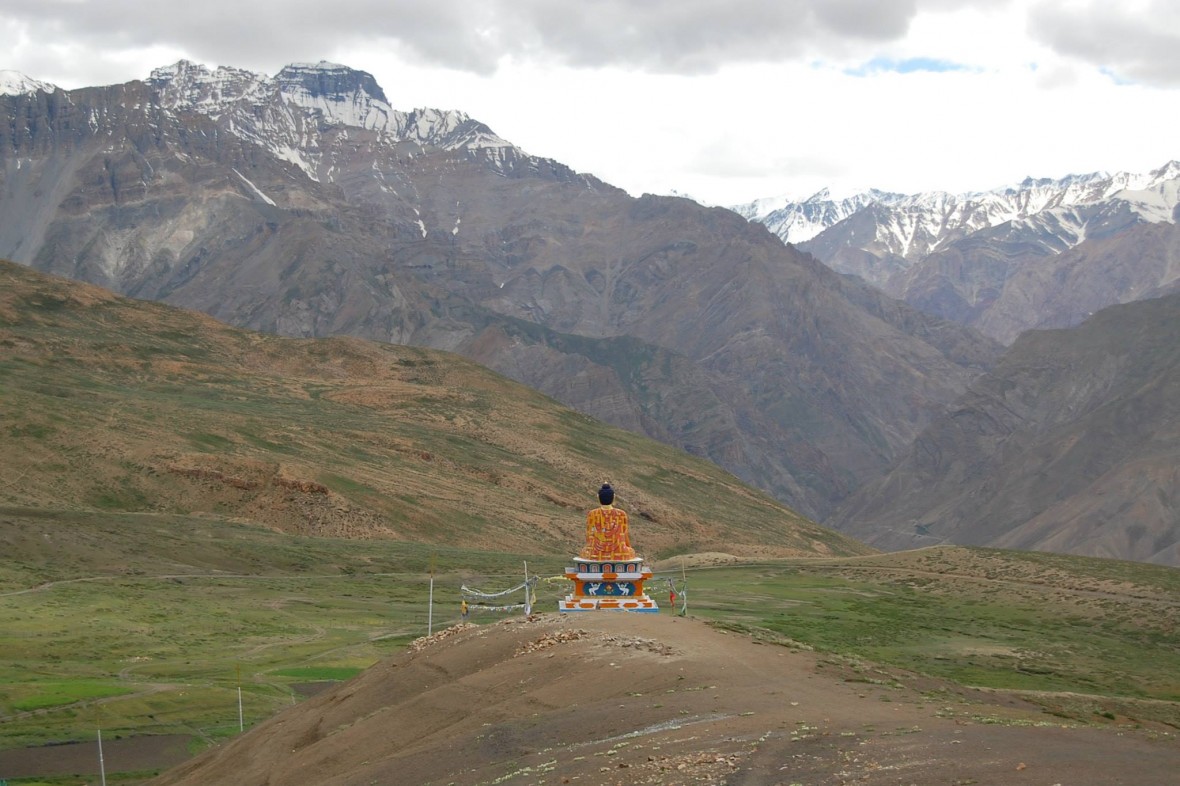
12
Mar
On arrival in Delhi, we set off immediately on a long drive along the historic and now a bustling expressway, the Grand Trunk Road, first built by the emperor Sher Shah Suri. The drive takes you through the Shivalik ranges and we gradually make our way to the middle Himalayan ranges to Manali.
Manali is a small hill station bustling with tourists. Start early next morning with a drive on the left bank of the River Beas to the village of Naggar, which is famous for the Russian artist Roerich’s gallery. Naggar also has a famous castle and the views around the area are spectacular. Return to Manali and drive to Solang, which is a paragliding and skiing zone.
The next morning, embark upon a day-long journey that takes you through the 13,000 foot high Rohtang pass and before descending into the valley of the River Chandra, over Kunzum. The entire drive is through landscape that will take your breath away.
We first travel to the highlands of the left bank plateau for altitude acclimatisation and return to Kaza for overnight stay. The visit includes Kye village (30 minutes), and the Kye Gompa, the largest monastery in Spiti. The drive upto Kibber village (30 minutes), which at 14,000 feet above sea level, is the road head for the trade route into Ladakh over the Parang La Pass.
Continue to the village of Gette and Tashigang (1 hour), high up in the mountains. Time permitting, walk down a spectacular, steep, downhill trail to Kye Gompa, where jeeps pick you up for the drive back. Spend the evenng roaming the Kaza market, where you may find interesting local handicrafts.
Lhalung is the largest village in the Lingti valley and is famous for its 1000 year old temple ‘Serkhang’ (golden temple) and possibly one of the oldest trees (dating back to over a 1,000 years). Lhalung is also known for its cultural performances.
Participate in and witness a cultural performance by the local folk artists and experience the warm hospitality of mountain people. An hours drive from Lhalung brings you to one of the most stunning locations in the Spiti valley, Dhankhar, the ancient capital of Spiti, which houses an ancient Monastery perched precariously between unique wind eroded structures.
Tabo is famous for its more than 1,000-year-old monastery. In 1996, the Tabo monastery celebrated its thousand years with a Kalachakra ceremony, which was presided over by His Holiness the 14th Dalai Lama. Spend time exploring the monastery and its numerous temples, before heading to Giu (1 hour). Giu is the furthest and most isolated village of Spiti, lying close to the border of Tibet (China). Giu village is also interesting as the body of an old monk ( 675 years old) sitting in meditation still exists intact albeit mummified. It is said that the hair and nails of this monk are still growing. After exploring the village in the evening, head back to Tabo, to spend the night.
Drive to Langza village (2.5 hours), located in a large high mountain meadow with a beautiful mountain, Chau Chau Kang Nilda, towering above this village.
Stumble upon evidence of the Tethy’s sea that existed here before the Indian mainland collided with the Tibetan plateau and formed the Himalayas, which are still rising today. Sea fossils can be found a short trek (~1 hour) away from the village. From here visit the ruins of an ancient monastery deserted a few decades ago. The monastery has a unique location and the locals have interesting interpretations and legends about its location. Thereafter continue to one of Asia’s highest villages, Komic (30 minutes) where you spend the night in a traditional homestay. Komic is also adorned by a legendary monastery. The day provides a fascinating insight into the Spiti way of life.
After an early (7 am) breakfast, drive back to Manali along the same route that we took to reach Kaza. Enroute you can visit Chandra Tal, the lake of the moon goddess. After crossing Kunzam La Pass (15,000 feet), time permitting, we take you on a short detour to Chandra Tal. Chandra Tal is placed between a low ridge and the main Kunzam range with an outlet into the Chandra river. The visit to Chandra Tal is dependent on road conditions and availability of time in the event that one has to walk to the lake.
We retrace our steps to Delhi via the long, but scenic 12 hour drive.
Copyright 2014 The Blue Yonder
Leave a Reply